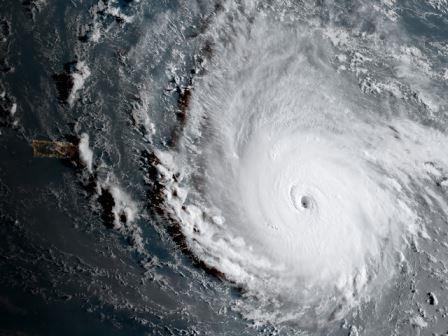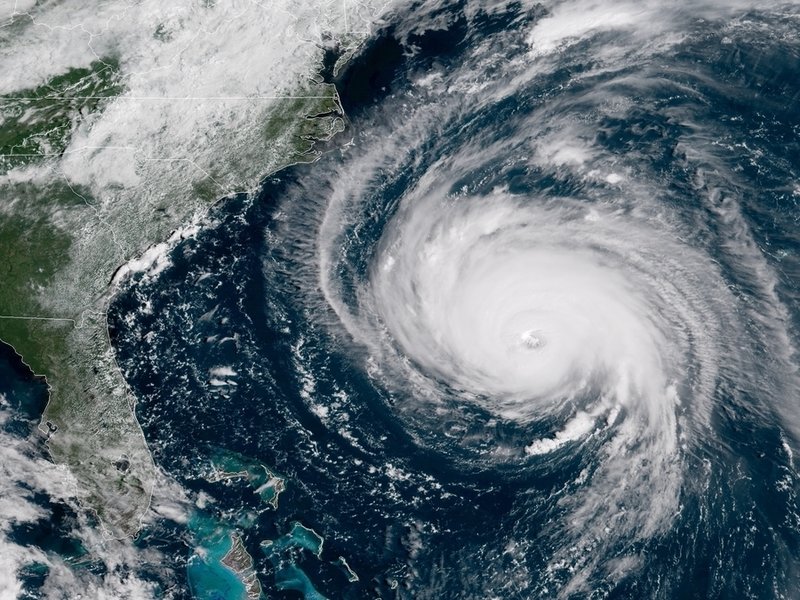10 Tips To Prepare Broadcasters for Hurricane Florence
It is critical that broadcasters plan ahead to safeguard their facilities and staff in case of an emergency.

Radio and television stations play a unique role as first informers during disasters, providing breaking news alerts and round-the-clock reporting to keep their communities safe before, during and after emergencies. Given the strength of the broadcast infrastructure, broadcasting is often the only communications outlet available during disasters.
Thus, it is critical that broadcasters plan ahead to safeguard their facilities and staff in case of an emergency. The 10 steps below serve as a general guide to help broadcasters stay on the air during disasters.
STEP 1: Prepare a Disaster Recovery Plan
Convene a cross-section of staff to work on a plan. Broad participation produces the most useful plans.
- Station engineers: identify operational and technical risks.
- News directors, producers and reporters: plan for continuous news coverage and remotes. General managers: oversee staff safety, training and communications.
- Station owners: champion a commitment to disaster planning.
The plan must address certain factors and consider both natural and man-made disasters:
- Risk assessment.
- Critical equipment, systems and services.
- Staff roles and duties.
- External and internal communications.
- Staff training and safety.
- Provide emergency news to all segments of your audience.
- Distribute, periodically review and test the plan.

STEP 2: Review Your Risks
What are the most likely emergencies that could impact your station?
The professional video industry's #1 source for news, trends and product and tech information. Sign up below.
Are you in a flood zone? Research the high-water marks in your area, and don’t forget about nearby dams that could break.
If hurricanes or tornados are common, prepare your facility for high winds and extreme rain.
Stations on the West Coast should secure their facilities and equipment in case of an earthquake and plan for possible wildfires. Freezes and icing can impact the Southeast, and major snowfalls affect the North. All stations should check for nearby tall trees or rock formations that could cause damage.
What’s at Risk?
People – Your staff is a station’s most important asset. Make a plan that keeps your staff and their families safe during emergencies.
Facility – Review the security, reliability and redundancy of your tower, antenna, transmitter, microwave and studio-transmitter links (STL) and any other system needed to stay on the air.
Supply chain – Make sure your station is prepared for power failures and equipment breakdowns. News delivery – Plan for alternative methods of reporting and distributing programming.
STEP 3: Engage Station Leadership
Ownership and management set the priorities of a station. Their commitment lets staff know that devoting time and money to disaster planning is valued. Leadership can also provide a holistic view of a station’s many functions, identifying connections among departments that may be vulnerable. Station leadership can also address other important risks like damage to a station’s image or reputation.
How long will it take to restart operations? Can you originate programming from there?Focus on single points of failure that could knock your station off the air.
STEP 4: Expect the Unexpected
The studio must be evacuated. Can you broadcast from another location? How will you get there?
- Do you have a backup tower or auxiliary transmitter, or another way to broadcast?
- How long will it take to restart operations? Can you originate programming from there?
- Focus on single points of failure that could knock your station off the air.
- Do you have a backup tower or auxiliary transmitter, or another way to broadcast?
- Microwave, fiber or STL links are lost. Can you receive or deliver content another way?
- Phone or internet access go down. Do you have a plan for communicating with staff, local public safety and clients?
- Electricity is lost or equipment breaks. Do you have a backup generator and a fuel contract to keep it running, for both the studio and transmitter? Have you made arrangements with vendors and contract engineers for a first right to obtain goods or services?
- Your server is corrupted. Do you have backup files off-site?
STEP 5: Programming Continuity
Broadcasting is never more important than during an emergency. Make sure you can deliver the news even if your station goes down.
- Have a plan in place to carry programming from a network or other local station, or simulcast on another station.
- Have a plan for continuous closed captioning service.
- Make plans to stream programming online during an emergency.
- Foreign language stations should plan to provide news over another local station.
STEP 6: Simple Fixes Can Make a Big Difference
- Don’t forget about common sense measures that can prevent or minimize problems
- Use glass with a high safety rating in windows and doors.
- Tether equipment racks securely.
- Use safety chains to secure heavy objects like speakers, monitors and lights.
- Anchor computer monitors to desktops.
- Bolt critical workstations to the floor or walls.
- Keep cars and remote equipment in multiple locations.
- Secure your facility: surveillance cameras, door entry keys and locks, fencing, perimeter security and reception security.
- Maintain backup data and records off-site.
- Schedule routine maintenance of all systems and equipment..
STEP 7: Staff Safety and Communications
- Identify and mark locations in facility for shelter-in-place.
- Store essential supplies: food, water, batteries, bedding, battery-powered radio, National Oceanic and Atmospheric Administration radio, flashlights, first aid kid, dust and filter masks, sanitation needs, tools, plastic sheeting and duct tape. Make sure at least one employee is trained in first aid.
- Encourage staff to keep a “go kit” at work for clothing, medications and toiletries.
- In case of evacuation, make a plan for communication with staff, including a process for checking in.
- Keep contact information on hand for local public safety and emergency management agencies, as well as clients and vendors.
- Keep important documents in a portable waterproof, fireproof safe, including building plans, insurance policies, employee information and bank account records.
STEP 8: Training
- Periodically train your staff on the disaster recovery plan. Use a quiz or other exercise designed to make sure everyone knows their role.
- Certain staff may be unavailable when disaster strikes, so cross-training is essential:
- Train back office staff and management for on-air and production operations like call screening, board operations, field producing, reporting and emergency announcement processing.
- Train board operators to make simple technical repairs.
- Make sure multiple employees know how to process emergency alert system messages.
STEP 9:Test the Plan
Practice makes perfect. Drill your staff on putting the plan into action. Test various scenarios:
Loss of master control operations:
- Switch to newsroom or production studio.
- Use remote vehicle to provide on-air programming.
Imminent threat to station facility:
- Evacuation and meet-up site.
- Move operations to another site or remote vehicle n Maintain communications among staff.
- Safe shelter-in-place location.
Transmitter failure:
- Switch to backup antenna.
- Simulcast on another station.
Server failure:
- Auto backup material.
- Switch to alternate server n File recovery steps.
STEP 10: Insurance
- Explore the various kinds of insurance that may help you recover from a disaster.
- Property insurance may compensate for building damage, internal water damage, electrical malfunctions and theft.
- Flood insurance availability may depend on your location. Internal flooding caused by broken pipes, leaking roofs and accidental spills is likely covered by property insurance.
- Loss of income or business interruption insurance may cover temporary needs like renting equipment to continue broadcasting and security personnel.
- Marine insurance is used to underwrite broadcast equipment like towers, transmission lines, transmitters, STLs and remote equipment.
- Cybersecurity insurance can help cover losses related to cyber disruptions of service.
